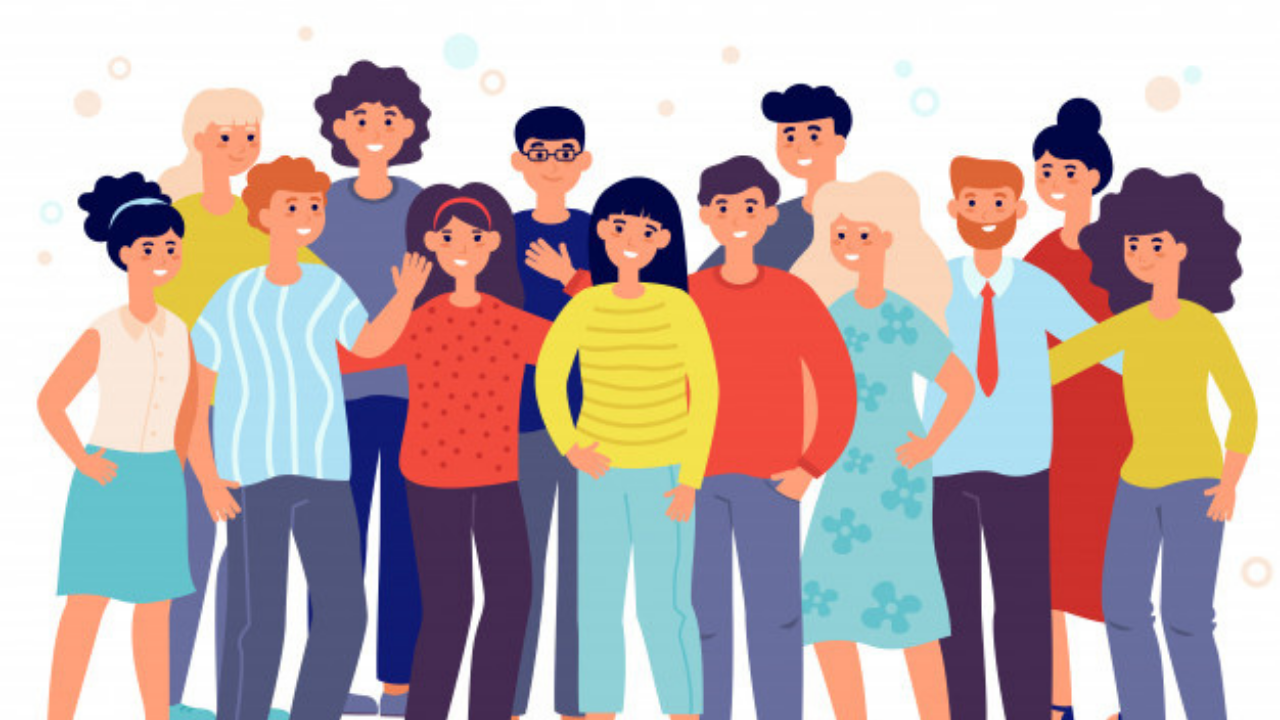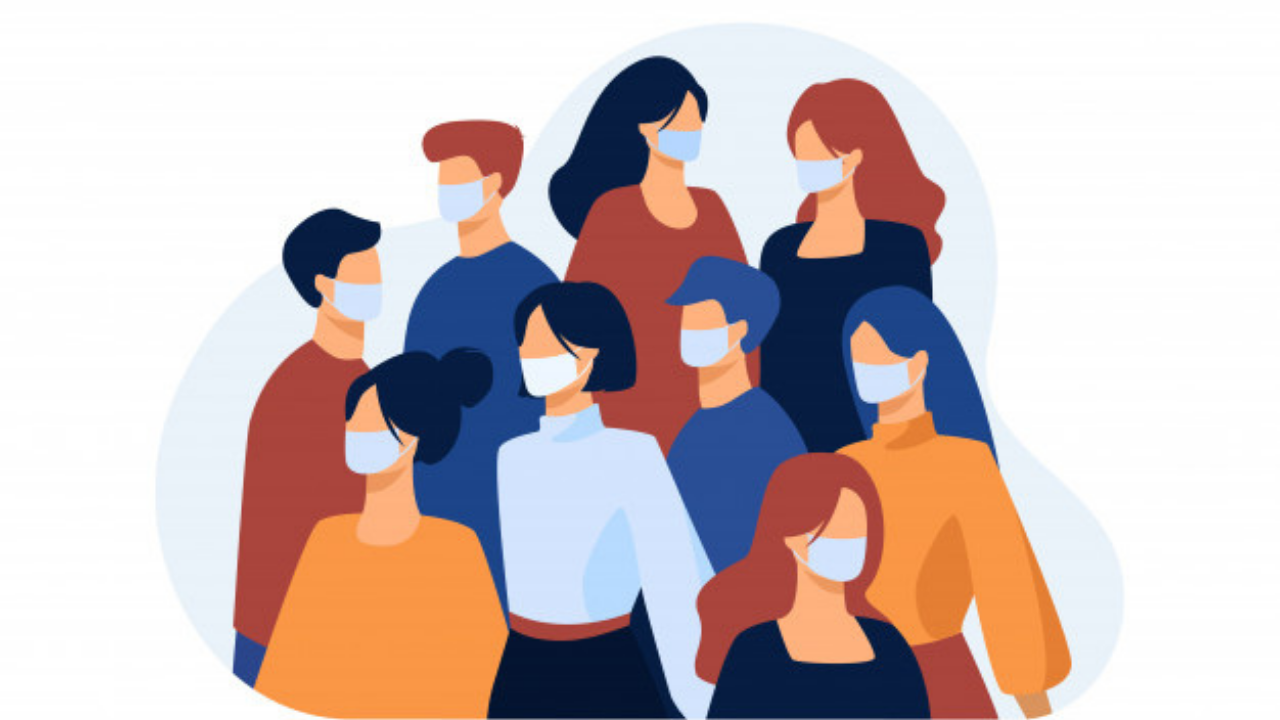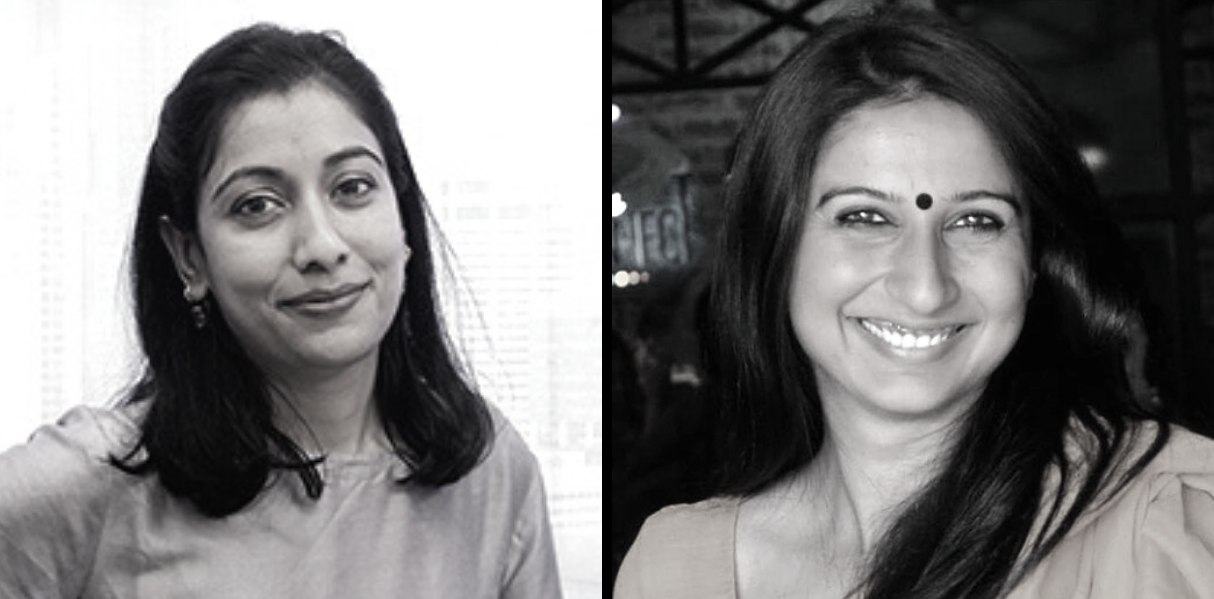Written by: Rajkanya Mahapatra
Currently spearheading the conversation on AI, HR Learning, OKR Systems at EDGE Networks, Aparna Devi Moola is a senior communications and marketing professional with over 19 years of experience. Aparna is the only woman in the leadership at EdGE Networks.
In conversation with, Pallavi Pareek, Founder and CEO, Ungender, Aparna discusses the issue of bias in Artificial Intelligence based technology models, the impact of AI on core HR functions like recruiting, and how diversity and inclusion can be incorporated into AI systems.
Pallavi: We’re talking about data, technology and bias today. There’s a lot of gratitude for what technology has made possible, including this conversation but there are also a lot of complaints. Before we look at that, it’d be great if you could tell us what EDGE Network does and the role you play at the organisation.
Aparna: To put it simply EDGE Networks is an AI company. It helps large organisations manage their talent problems. Right now, we’re focusing on two sectors, specifically – IT services and BFSI (Banking, Financial Services, and Insurance). Now, we’re also looking to create a new category of talent decisioning. But how are we doing this? How do we help companies minimise their costs intelligently by managing their talent? Here are some ways we do it.
When job requisitions open up, we encourage companies to look inside first, look for talent inside, look at skill sets that are inside the company and utilise that talent internally. If they don’t find the specific skill sets, how can they upskill the people that they have inside transform that talent, so those employees, their career aspirations, their career growth is still kept in mind. At the same time, the organization’s productivity and attrition is kept at bay, so that it is still profitable for them.
The AI Product
The last thing is if you still don’t find your talent internally, you look outside and we help you find the right talent, outside. How do we do this? Now, this is where the AI technology and machine learning part comes in. We have built something called the ‘Knowledge Graph’, internally, we call it the ‘EDGE graph’. This is the star of the show.
You’ll have to imagine like a magic bubble with 35 million job descriptions (JD) and 11 million profiles. This has come after scanning about 10% of the Indian IT services workforce. So, we use this data, this info to build our insights with state-of-the-art neural networks, so that we can help read companies’ JD(s) and resumes to help hire the right people. So, we’re working with people, we believe they are the focus of the future. We are doing it with AI and technology. So there has to be synergy. It can’t be one or the other. It has to be both.
As for my role, I joined this company in 2014 as part time, and went on to become the Head of Marketing and have built this corporate brand. So we’ve got something called the OPR system in place, I’m running. We’re also looking to launch our new products in October/November. So that’s where we’re at. I think our products have value because we people are at the heart of every business decision. There’s no two ways about it. But how can we use AI and technology the right way to impact that?
Women In AI
Pallavi: I’ll share some numbers and maybe you could share what you think about them. Interesting. The World Economic Forum conducted a survey with LinkedIn users, wherein, they self identified as possessing AI skills. They found over 70% of those respondents were male. AI researchers in 2018 found that at 21 AI conferences on machine learning across 23 countries had 82% researchers who were men.
Aparna: I’ll not deny that the technology field as a whole, and AI field, in particular, is male dominated, but I think that is something that is across all fields. There are things that can be done to change that. I seriously believe that we need to break barriers, starting with schools. How do we educate children? How do we show them that this can work? Statistics say that halfway through their career in technology women leave – they move on. They can’t keep going as the environment is unfriendly. It’s very male dominated.
One thing that can be done at a lot of AI conferences, they have round tables, specifically for women and that needs to be showcased far more. There are role models in the field. There are women leaders in the field, they may be a very small percentage. But how do we showcase them, and you know, switch it up? So that children in school, colleges, entry level employees know that there is a career path for them and they can go ahead.
Pallavi: You’ve been in this sector for a while, do you think there has been a change in women’s participation in technology?
Aparna: It has changed. I started working in 1995 – my first job was then. I dressed down for my first job, I literally had to make myself look older, boring. It went against the grain of who I am. I was brought up very differently by a very broad minded single mother, single. So it went against my grain but you need to work and you need to figure it out.
You need to go up there and do what needs to be done. I’m here today and the reason why I’m still at it is because I’ve seen the change. I’ve seen my peers and women who are much younger than me, go places. So, I do believe change is possible. But it is up to each one of us to talk about it. If we don’t talk about it and get it out then it’s not going to happen. I’m not saying get confrontational but it has to be done. Women have to support each other.
When I started at EDGE in 2014, the technology team had 20% women. Today, the DS team has 44% women. The entire team at EDGE has 35% women which I think is good.
Diversity and Inclusion In AI Products

Pallavi: I loved the part where you say it’s not about getting confrontational but it’s about keeping the dialogue going. It’s about ensuring that you keep the communication line open. It’s a discussion, especially for within companies. Inclusion plays such a crucial role. I was part of this conversation a few days ago and somebody asked why we were so hell bent on focusing on diversity. My fellow speaker gave an excellent example. He said, “when we talk of biodiversity as one of the key forces for the environment to sustain and grow – the same applies to an organisation.” If you have diversity at an organisation, it will ensure your survival and growth. That’s what companies need to realise.
Aparna: When we say diversity, when we talk about diverse workforces, what does it automatically bring into play? It automatically brings in diversity of thought. In this case, I’m not only talking about gender, it’s race, it’s minorities, communities, religions – you bring everything in and you’re going to get more intelligence, more thought, more emotion, and you will head towards the right goal.
I’m sure you’ve all done the research, the numbers are saying that a diverse workforce generates over 30% more revenue. When you have women leadership in your management, there’s 19% more innovation revenue. It affects your financial performance for the better. For me, I think the first step is getting a diverse workforce. The second step is to get a diverse management team.
Pallavi: As tech products are made for a large number of people, is it not important to see who are making these products and what impact that has on the product? The lack of women in AI puts a question mark on how inclusive AI systems are.
Aparna: In terms of output and sale of the Siri(s) and Alexa(s), of course, it will have an effect. When you’re putting these systems in place, it’s very important that there’s a large amount of testing transparency. I’m going to give an example of our own systems – when we have products for internal mobility, talent acquisition, and we have something called the Pathfinder, which is for employees for their own career growth.
Now, if we are not careful on removing those biases, it’s going to have an impact. It’s going to be the whole only-male kind of recruiting that happens. It is bound to happen because a lot of the data which comes in, is male-oriented.
If a company has mostly been hiring men, then you have to stop looking at historical data, start culling that out, start looking at removing the necessary attributes, start doing the testing. So there’s a lot that can be done but the intent has to be there. For the intent, again, you do need a diverse AI workforce because the thought process then gets diversified.
Pallavi: There’s a scarcity of women in machine learning research as well. The people creating products are not diverse, are they able to create products which are diverse? People with a single line of thinking and habits creating products for a single target segment which is carrying forward the same thought process and biases.
Aparna: Let me twist it a little here. A lot of our clients are coming back to us today, saying, “We have DNI policies in place. What is your product doing to complement that?” If we don’t have that in there, they’re not interested in looking at us.
So today, in all our demos and pitches, questions are coming up: “What is it that you’re doing for diversity and inclusion? What are their features?” We have something called the ‘blind recruiting’ feature, which addresses various biases, whether it’s affinity bias, conformity bias, halo effect, horn effect – the feature addresses that. Finally, when you’re looking for a job requisition, when you’re looking for a JD for a particular job, you’re looking only at the skills and competencies, you’re not going to look at the other aspects. So you’re only judging on that part. This also automatically complements the DNI policy.
Now, what also helps us is that we do have a good mix of men and women in our DS Team and it does help. It’s not going to be a hundred percent. I’m not going to say we are going to be because it’s a machine learning algorithm at the end of the day, it keeps learning. As it continues learning during the testing, they have to keep removing embedded attributes which are biases. You have to keep doing that but at least the intent is there, we have to make it right.
I asked my Sales and DS Team what was their response when clients asked about D&I features of our product? My team members presented several versions of the product. Diversity and Inclusion (D&I) features are being asked for and our clients are asking us what impact it has. It’s even better when we can link it back to saying it affects their bottom line. At the end of the day, organisations are concerned with the financial performance.

Pallavi: So, how is EDGE Networks going about making better tools that help companies achieve the above-mentioned?
Aparna: So, one thing that I talked about was the ‘Knowledge Graph’/the ‘EDGE graph’, right? It has read so much data that we use that for planned insights. Now that’s the brain of the system. So, when we’re looking to hire, whether it is internally or externally, we look at removing biases. Okay, so that’s where we are.
As for what we’re doing for companies, we’re helping them solve the talent management problems because if people are not optimally managed, there are serious business repercussions, cultural repercussions – the whole thing turns around. If people are not happy where they work, they’re not going to be productive at the end of the day.
Pallavi: Have you heard people say that they don’t care about diversity?
Aparna: I’ve heard it even in my office. My previous organisation and others would say, “Why do I care? If the company is performing, that’s all that matters.” I hear it all the time. I say that’s fine, performance is important. I’m not saying no but have you ever thought that there could be another view? There could’ve been another way of solving a problem? It’s a constant battle. For me diversity is about diversity of thought. If they’re going to be narrow minded, it’s their loss.
You have to keep working at it. I believe in showing quick wins. If you show that there is a way of managing it. There is data. There are metrics to show, why not show it, and make them understand? We’re dealing with centuries of bias here. It’s not going to happen overnight. AI and technology helps show that data. The data will show how it impacts your performance and how it impacts metrics.
Pallavi: There’s a lot of conscious and unconscious bias around crafting job descriptions. We work with companies to tell them how to neutralise the job descriptions. Have you looked at the data in terms of applicants? What have your observations been on this?
Aparna: We’ve something called the ‘Demand Creation Manager’, when the hiring manager looks at creating a job requisition, he has to see that the attributes are not biased. When the supply comes in also, things have to be masked. That’s what we’re saying when we talk about the blind recruitment feature. To mask those attributes that will trigger your bias, so you only see the skills and competencies. You don’t know whether they’re female or male, the college they’ve been to, which company they’ve worked at earlier. You just know work ex, you know those things based on your requisition. So, that helps to a great extent in curtailing bias.
The Impact Of Covid And The Way Forward
Pallavi: How has it been for the EDGE Team during Covid?
Aparna: It’s been hard. I love going into work. I love meeting people. I’m sure a lot of my colleagues think the same way. We have colleagues who are as young as 20-years-old right up to 49. So, it’s a diverse age group and it’s lots of fun. As for coping as a team during Covid – it has not been easy. This initiative that we started to connect with each other, engage with each other has made a difference.
I have to say, my team has supported me brilliantly, and I hope we’ve supported each other. We’ve even put together an employee assistance programme, where we have a counselling helpline, we have seminars, we have information available where people can reach out because if we can’t connect with each other then we are going to fall apart. Coming to the next part, I see a change in the pace of the company, we’re actually pushing ourselves to do better.
In a way, this Covid-19 pandemic has spurred things to a great extent because this whole work-from-home experience has made a lot of companies realise that they need to support their employees, especially their women employees.

There are two parts to this thing – one is the whole work-from-home piece. I personally don’t believe that you can sustain this for a long time – at some point we will have to come back as teams and meet each other, maybe not every day, but at least twice a week because people are the social capital of the company. For instance, in the last four or five months, there are 30% of my colleagues who are new. I’ve only met them like this [online], but we haven’t actually gone out for a cup of coffee or a beer. It’s just been online interaction. So that has to come back.
Secondly, I think people have learned with this work from home, especially men have learned that it’s not easy. It’s not easy to sit at home and work. I have seen some say, “Okay, listen, I need a couple of hours off, or I’ve been on team calls but have been cooking, you know.” They’ve also seen their wives do it.
Thirdly, what organisations need to do is they have to have the intention of having a diverse and inclusive workforce. For that digitization and technology needs to be used because that can help in eliminating certain biases.
Leadership believes in data – the first step will be to get a diverse workforce in place. The second step is to get a diverse management team in place, they will have to do things step-by-step, it’s not going to happen automatically. I can’t say, “On my board, I want three women.” It’s not going to happen that way, but at least if they get this far, then the other things will also happen. My personal belief is digitization or technology needs to be used the right way for this to happen, it will complement the company’s intentions of having a DNI policy.
Video Highlights
02:27 – What EdGE Networks Does
07:07 – What We Can Do To Bring Women Into AI
16:10 – What Diversity Brings To The Table
22:24 – Clients Are Asking For D&I Features In AI Products
27:28 – Answer For Those Who Don’t Care About Diversity
34:25 – How Does ‘Blind Recruiting’ Work
Ungender Insights is the product of our learning from advisory work at Ungender. Our team specializes in advising workplaces on workplace diversity and inclusion. Write to us at contact@ungender.in to understand how we can partner with your organization to build a more inclusive workplace.










